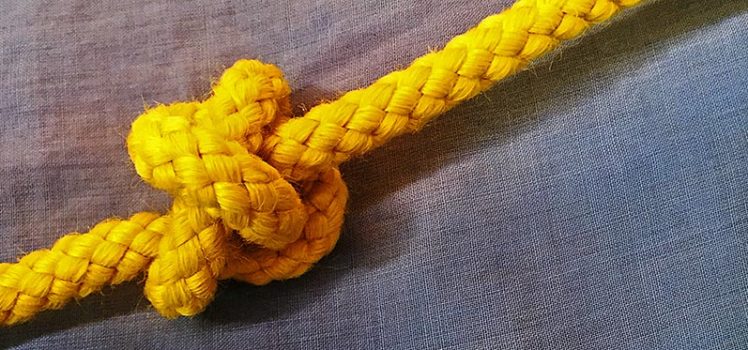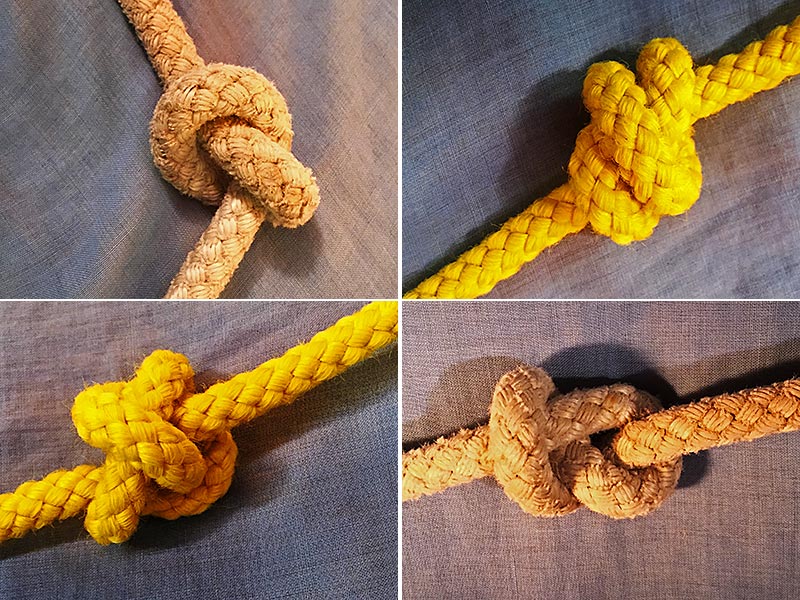Stopper knots: why, how and where

If you’ve ever had to re-run a line that slipped back through a rope clutch, or even worse, fish one that you lost back down the mast or the boom, you know first hand the value of a stopper knot. Stopper knots, tied near the end of various pieces of running rigging, prevent such troublesome situations from occurring. But which knot to use, that is the question?
We typically use a simple Figure 8, but there are all manner of knots that will do the job. The excellent website Animatedknots.com shows how to tie a number of them.

Where to tie the Stopper Knot
One thing that I’ve recently started doing is to tie my stopper knots a foot or so from the end of the line, as opposed to right near the very end. This was suggested to me by Jason on Two Fish while we were en route to the Galapagos (you have a lot of time to talk shop when you’re on an ocean passage). His thinking was that having that extra tail beyond the stopper knot would allow you to tie a rolling hitch to the line in order to retrieve it if the stopper was drawn up tight to a clutch and was under load. The reasoning seems valid, and since there are no drawbacks to doing this that I can imagine, we have followed suit. For details on how to tie a rolling hitch, see the beginning of this video:


Nice use of a snatch block!
Excellent demonstration and (as always with your postings) very useful information. Thanks!
FYI, shooting this video on a calm day, if such thing exists in Grenada, without the wind noise would be better.
Windless days do exist but they are very rare!
I like Jumars (ascenders) for this; faster, one handed, easy even when wet, never slip. Typically they are only going to work up to 1/2 line, 1500 pounds. I keep a pair of 30′ 3/8″ lines with a loop on the end to take biners, snatch blocks and ascenders, just for this sort of work-around. (FYI–I have extras, it’s not one I use climbing.)
I got in the habit of tying 2 stoppers, about 12″ apart years ago. When knot hits a block, there is still something to grab or rig to.
I like the ashley stopper best at the end of a line, and a double overhand if it is in-line.
I like the idea of two stoppers. It basically allows the same thing that Jason was after.
Jumars are great of you have access to them. I think that even better, for a backup, is the Petzl ASAP, as it doesn’t require any manual intervention to work. Most cruisers don’t have either though, and won’t likely invest in them. The simple Prussic will work one handed too if the base of the backup halyard is well secured, and even a frugal cruiser should be able to find a piece of suitable line to use as an acceptable backup.
I think its one of those early sailing lessons; the jib sheet blows out of the clutch and is waving 20 feet over the water, then somehow wraps around the prop shaft on a rough, a windy day. Once you see that happen – from then on you really value the stopper knot. Good post.
Definitely don’t want that to happen!